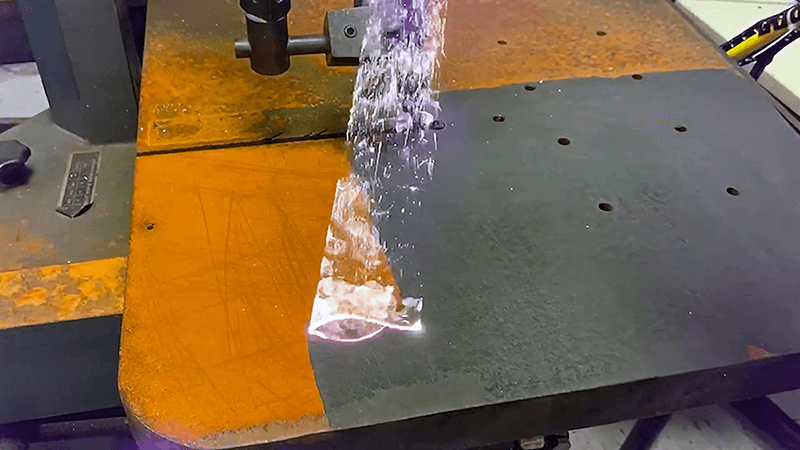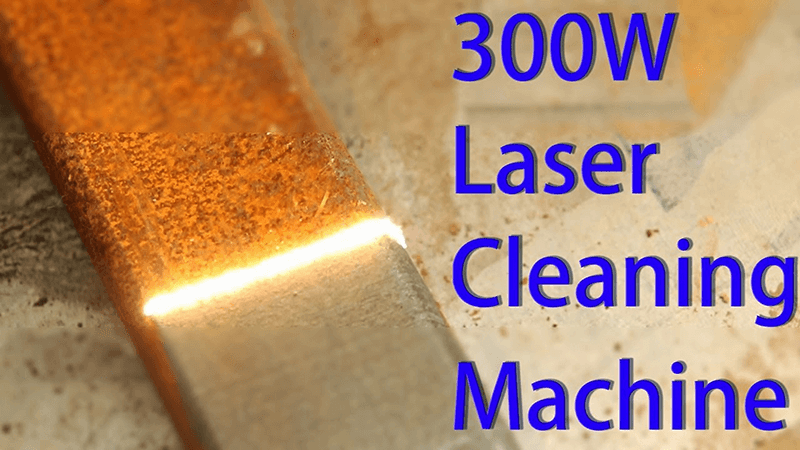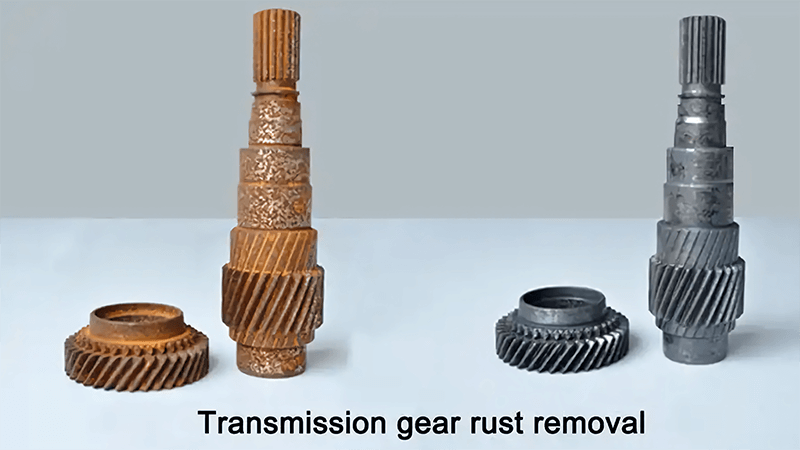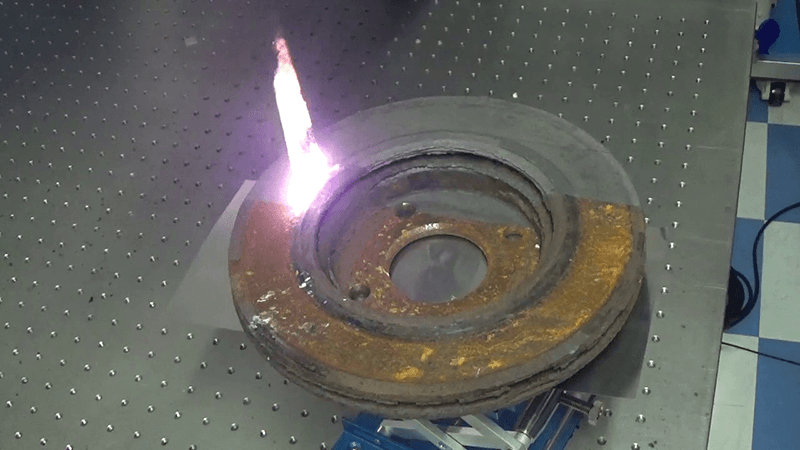I see many buyers who need clean surfaces, but they fear heat, abrasion, and chemicals. They try many tools, and they still fail. I understand the pain. I build simple laser systems that remove only the dirt, not the value.
Laser cleaning systems fire short, high-energy pulses that vaporize rust, paint, oil, or oxides, while the base material stays safe. The beam targets contaminants because they absorb energy faster. The result is fast, precise, and dry cleaning with no chemicals and less waste.
I speak as a manufacturer and OEM partner. I run Kirin Laser. I design and build laser cleaning machines, welding systems, and marking units. I work with wholesalers and industrial users. I focus on repeatability, safety, and stable support. I explain the core ideas in simple words, and I back them with clear data.

What is laser cleaning?
Many teams fight rust and paint with blasting or chemicals. They spend money, and they damage parts. They also face waste rules and safety risks. I know the stress. I offer a cleaner way that works on complex parts and tight spots.
Laser cleaning is a non-contact method that uses pulsed laser light to heat and vaporize surface contaminants like rust, paint, or oil, without harming the substrate. It is precise, fast, and dry. It suits metals, composites, and stone when I set the right power and pulse.
How It Works In Plain Terms
I can explain the physics in simple steps. A laser pulse hits a surface. Contaminants like rust or paint absorb light strongly. They heat up fast. The thin layer then turns into gas or tiny particles. The base metal reflects more light, and it stays cooler. So the dirt lifts off, and the part stays safe. I tune pulse energy, frequency, and time on target. I adjust the spot size and scan speed. I add a fume extractor to collect debris. The process is dry. I need no media, no grit, and no solvent. I see clear edges and a smooth finish.
Key Process Parameters
I set values based on the job. I test sample parts. I choose power and pulse width to avoid heat marks. I set frequency and scan pattern to avoid overlap marks. I use a focus lens that matches the area size. I keep the nozzle distance stable. I track temperature if needed.
| Parameter | What I Set | Why It Matters |
|---|---|---|
| Laser power (W)1 | 100–2000 W pulsed | Higher power removes faster but may heat more |
| Pulse width (ns–µs)2 | Short for precision | Shorter pulses reduce heat diffusion |
| Frequency (kHz) | Match layer type | Higher freq smooths, lower freq lifts thick rust |
| Scan speed (mm/s) | Based on layer | Fast for thin films, slower for heavy oxides |
| Spot size (mm) | 0.1–3.0 | Smaller for detail, larger for area |
| Focus distance | Fixed with guide | Keeps energy density consistent |
| Air/fume | Active extraction | Removes debris and protects optics |
A Short Story From The Line
A client in automotive had complex brackets with rust in bends and holes. Sanding left scratches. Chemicals were slow and harsh. I set a 500 W pulsed unit with a 200 mm lens. I ran a hatch scan at 2 m/s and 40 kHz. I removed rust only. I left the base steel smooth. Cycle time dropped by 35%. Rework dropped by half. The team kept the geometry and the look.

How safe is laser cleaning?
Some buyers worry about lasers. They fear burns, fumes, and eyes. They fear the unknown. I understand. I build safety into the frame, controls, and training. I make safe use simple and clear.
Laser cleaning is safe when users follow class and PPE rules, use a proper enclosure or curtains, and run fume extraction with filters. I design interlocks, key switches, and emergency stops. I provide training and signs. Safe use is practical and repeatable.
Safety Layers I Build In
I ship each system with a clear safety plan. The laser head has a trigger with a two-step start. The system has a key switch, an e-stop, and door interlocks. The software limits power on first start. I log users and track settings. I add beam blockers and certified curtains when needed. I include OD-rated eyewear for the wavelength3. I also add a fume extraction system with HEPA and activated carbon filters. I ground the frame. I shield cables. I label zones with class signs.
Risk Control In Simple Steps
I follow the standard steps: control the beam path, shield the area, protect the eyes and skin, remove fumes, and train people. I never rely on one layer. I stack many layers. I test the interlocks. I inspect eyewear. I keep a clean floor and clear lines. I do mock drills for e-stop.
| Risk | What It Is | What I Provide | What You Do |
|---|---|---|---|
| Eye injury | Reflections | OD-rated goggles4, curtains | Wear PPE, control reflections |
| Skin exposure | Direct or diffuse | Interlocked head, shields | Keep distance, use fixtures |
| Fumes/particulates | Vaporized coatings | Fume extractor + HEPA + carbon | Replace filters on schedule |
| Fire | Flammable coatings | Nozzle air, spark watch, timers | Clear area, keep extinguisher |
| Electrical | High power lines | Grounding, lockout points | Lockout/tagout for service |
Practical Notes From The Field
I see most incidents from poor zone control. People walk through the path. So I mark the floor. I add warning lights when the beam is armed. I train a spotter for mobile carts. I also see issues from bad eyewear storage. I give hard cases and clear labels. Filter neglect is common. I add a run-time counter and alerts. Safe work stays simple when I make checks part of the start and stop routine. I keep it short and strict.

What training is needed to use a laser cleaner?
Many teams fear a long learning curve. They fear complex software and fragile optics. They also worry about handover to shifts. I remove that fear. I design the UI for simple steps. I train on real parts. I certify operators fast.
A new operator can run basic laser cleaning after structured training that covers safety, parameters, optics care, fume control, and process validation. I provide SOPs, presets, and quick tests. Most teams reach steady use in days, not weeks.
My Training Path
I split training into five blocks. I start with safety5. I show class rules, PPE, and interlocks. I then teach the interface. I explain power, frequency, pulse width, and scan speed with plain words and real parts. I move to optics care. I show lens inspection and cleaning. I then cover fume extraction and filter change. At last, I focus on process validation. I run sample tests. I set acceptance criteria. I record parameters in a simple sheet.
Roles And Hours
I train operators in 6–8 hours. I train supervisors in 4 more hours for QC and recipe control. I train maintenance in 4 hours for optics and filters. I offer remote refreshers. I keep videos and quick guides on the HMI. I lock recipes by role to avoid drift.
| Role | Skills | Hours | Output |
|---|---|---|---|
| Operator | Safety, presets, basic runs | 6–8 | Runs standard jobs safely |
| Supervisor | Recipe edit, QC checks | +4 | Approves new parts and audits |
| Maintenance | Optics, filters, logs | +4 | Keeps uptime and stability |
| Engineer | Advanced tuning | +6 (optional) | Builds new recipes and DOE |
SOPs And Simple Checks
I give SOPs6 that fit one page. I use checklists for start and stop. I include a 60-second test on a coupon before a batch. I keep a log of parameters and results. I use color cards for pass/fail by gloss and roughness. I provide a QR tag on the head that links to short clips. I reduce dependency on memory. I make training stick. When staff leave, the process stays.

What materials can be laser cleaned?
People ask me if lasers can clean anything. The short answer is no. The clear answer is that lasers clean many metals and some non-metals when I tune parameters. I always test before scale. I do not guess.
Laser cleaning works best on metals like steel, stainless steel, aluminum, copper, and titanium. It also works on stone, some composites, and molds. I avoid soft plastics and low-temp materials unless tests prove safe. I always run samples first.
Metals I Clean Often
I clean carbon steel rust7 and mill scale. I clean stainless steel oxides8 before welding. I clean aluminum oxides before bonding. I remove paint from copper busbars without gouging. I strip coatings on titanium parts with care. I also remove oil, release agents, and light adhesives. I keep pulse width short for thin films. I keep energy density in the safe window for each alloy.
Non-Metal Use Cases
I clean stone facades with low power and wide spots. I clean molds made of nickel or steel with build-up from release agents. I clean composite molds, but I protect the base with lower energy and fast scans. I can remove soot from wood or historical stone with strict control. I avoid PVC because of chlorine fumes. I avoid thin plastic films because they melt.
| Material | Typical Target | Notes |
|---|---|---|
| Carbon steel | Rust, mill scale | Medium power, slower scan for thick rust |
| Stainless steel | Heat tint, oxides | Short pulses preserve finish |
| Aluminum | Oxide, oil | Short pulses, keep heat low |
| Copper | Paint, oxide | Lower energy, high reflectivity |
| Titanium | Coatings, oxides | Precise control, small spot |
| Stone/brick | Soot, pollution | Low power, wide spot, test first |
| Composites/molds | Release build-up | Avoid fiber damage, fast scan |
| Plastics | Rare | Test only; many plastics deform or off-gas |
My Testing Method
I request a few parts or coupons. I run a parameter matrix. I change one setting at a time. I record pass/fail by visual check, mass loss, adhesion, or contact angle. I take photos and short videos. I ship a test report with the machine recipe. This report becomes your baseline. It shortens your ramp-up. It also protects your quality team. You do not need to reinvent the wheel.

What are three disadvantages of laser?
I speak with honesty. Lasers are strong tools, but they are not perfect. Some jobs do not fit. Some costs are upfront. Some coatings are slow. I explain the limits first, so you make a clear choice.
Laser cleaning has three main downsides: higher initial cost than blasting or chemicals, slower removal for thick or black paint layers, and safety controls that add setup steps. I reduce these with right sizing, presets, and mobile carts.
Cost Reality And TCO
The machine price can be higher than a pressure pot or a drum of solvent. This is true. But I ask buyers to see the full cost. Media costs repeat. Waste costs repeat. PPE and permits cost money. Surface damage leads to rework. A laser has high uptime and low consumables. The main consumables are filters and lenses. Power use is steady and not high for pulsed units. I show a 3–5 year TCO view. Many buyers pay back in 12–24 months when rework falls and throughput rises.
Speed Limits On Thick Coatings
Lasers shine on rust, oxides, light paint, and prep before welding. On thick epoxy or black paint, speed may drop. The beam must convert layers to gas or flakes. This takes energy and time. I fight this with higher power, a tighter spot, and a slow hatch. I also use pre-score patterns. For huge flat areas with thick paint, blasting may stay faster. I tell buyers to mix methods when needed. I pick the right tool for the job.
Safety Overhead
A laser needs zone control, eyewear, and fume extraction. You need a safe area or curtains. You need a routine for filters. You need training. These steps add setup time. I cut this time with a mobile cart that has built-in curtains, lights, and extractors. I ship SOPs with one-page checks. I keep the work simple and steady.
| Disadvantage | Impact | How I Mitigate |
|---|---|---|
| Higher capex | Budget pressure | Right-size power, financing, TCO model |
| Slower on thick paint | Cycle time risk | Parameter tuning, higher power, hybrid methods |
| Safety setup | Extra steps | Mobile kits, curtains, SOPs, training |
When To Choose Or Not Choose
I advise buyers to use lasers for selective cleaning, complex shapes, mixed materials, and when they need a clean base with no profile. I advise against lasers for thick elastomer coatings on huge flat surfaces when time is tight and finish is not critical. I help pick a hybrid plan. I do not push a sale that will fail. This is how I build trust.

Conclusion
I build laser cleaning systems 9 that remove only what you do not want. The beam is precise. The process is dry. The results are repeatable. I size the machine to the job. I train your team with clear steps. I support you with parts, filters, and recipes. If you ship me sample parts, I will show you real results and a simple TCO that fits your plan.
-
Understanding laser power is crucial for optimizing cleaning efficiency and preventing damage to the base material. ↩
-
Exploring pulse width can help you grasp its role in precision cleaning and heat management. ↩
-
Understanding OD-rated eyewear ensures optimal eye protection against specific laser wavelengths, crucial for safety in laser operations. ↩
-
Explore this link to understand the significance of OD-rated goggles in protecting your eyes from laser hazards. ↩
-
Exploring safety training resources can enhance your understanding of best practices and ensure a safer workplace. ↩
-
Learning about effective SOP creation can streamline your training process and improve operational efficiency. ↩
-
Explore this link to discover proven techniques and best practices for effectively cleaning carbon steel rust. ↩
-
This resource provides essential tips and methods for cleaning stainless steel oxides, ensuring a better welding outcome. ↩
-
Find the best laser cleaning machine and laser cleaning solutions from Kirin Laser, clicking this link to get all your needs for your business. ↩





